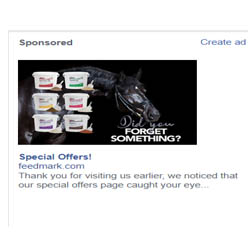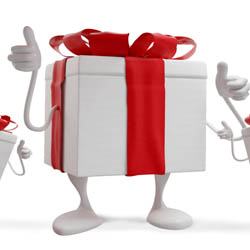Why Facebook Ads Don’t Work
Facebook ads really do work but ONLY if you pay attention to them!
I’ve seen ROIs in excess of 2100% for ecommerce business and fantastic lead gen campaigns, but I’ve also seen campaigns that spend more than they bring in and generate little to no leads. If your campaigns aren’t performing, I believe you will be making at least 75% of the following errors.

Ad Frequency
This is the number of times a person sees the same ad. You want to aim for this number to be as low as possible. How many times have you seen the same ad? Do you read it or do you scroll past and ignore it? The more the same ad is seen, the more people will ignore it and worst case scenario, they will tick the box to stop seeing your ads full stop.
To overcome this, add variations of your ad. Change the image, change the text, change the position of the text. It’s also a great way to test what style of ad works best for your audience.
Audience Targeting
How well do you know your target audience? Consider your current customer base (if you have one). Do they share a combined interest, demographic or occupation? Are you narrowing your audience sufficiently to hone in on people who share those characteristics?
Rather than simply targeting by age and location, narrow your audience by common interest and hobbies, occupation or life event. Better still, narrow by combining targeting options.
If the majority of your current customers are women, it might be a good idea to set your audience to reach women and exclude men.
If your product is used by a specific group of people, such as parents with young children, look to see if Facebook offers that option under demographics.
Think about what interests your audience might have. If your company makes running shoes, for example, you might look for interests related to running, cross country, fitness, wellness and other related activities. Don’t just look for people interested in shoes.
Have you narrowed your audience too much? Monitor the “Audience Definition” panel to the right of your audience creation options. If the indicator needle is in the red section of the dial, make your audience broader.
There is no “one size fits all” with audiences so test test test! Create multiple audiences, one narrow and another broader. Test them both to see which one performs better for you. Amend those audiences and try to improve them pending the results.
Remember, you are charged every time your ad is shown to someone, irrespective of whether they click on it or not, so making sure your audience is highly targeted is of paramount importance, particularly if budget is tight.

Blanket Remarketing Audience
If you are serving ads to people who have already interacted with your business – website visitors, Facebook and Instagram commenters etc, the chances are you have one ad which is shown to those people over a recurring 30 day period. A person tends to stay in a remarketing list for 30 days, unless they re-visit the website in which case the time period is reset.
Instead of showing the same ad over and over again to the same person, split the audience up into website visitors 7 days, 14 days, 30 days. You can then serve a different ad to each audience segment with a different message at each stage.
People who have visited your website in the last 7 days, may just require a little reminder nudge to come back and interact with you whereas people who visited in the last 30 days may need a stronger call to action – a better incentive.
Budget
Most campaigns fail because the budget is too low.
Facebook goes through a “learning phase” every time an ad is shown. It shows ads to a variety of people (within your target audience) and in a variety of places on the platform. As it continues to show the ads, it learns where best to place them and to who in order to reach your required goals. During this learning phase, an ads performance will fluctuate and often the cost per action will increase. For an ad to exit the learning phase and start to stabilise, it requires approximately 50 conversion actions in a 7 day period.
If your budget is not high enough to enable Facebook to show the ads enough times to achieve this number of conversions, your ads will not stabilise and the limited performance will continue.
Tracking
Have you set up tracking in full? If you are not tracking every possible interaction available on your website, your statistics won’t be giving you a true picture of how the ads are performing. Depending on your goals, you may want to include conversion actions such as click to call, click to email, newsletter sign ups, purchases and contact form fills. Facebook have a number of built in conversion actions but it is highly likely that you will need to set up customised conversion actions as well.
Too Many Changes & The Learning Phase
Every time a significant change is made to an ad, the ad returns to day one of its learning phase, becomes less stable and has a higher cost per action while Facebook tests how best to serve the ads to reach your goals. Ads will only continually perform well once they have exited the learning phase (50 conversions in 7 days ).
Try to avoid resetting the learning phase by:
Waiting to edit your ad set until it’s out of the learning phase. During the learning phase, performance is less stable, so your results aren’t always indicative of future performance.
Avoid unnecessary edits that cause ad sets to re-enter the learning phase. Edits that meaningfully change how your ad set might perform in the future include:
– Budget (depending on magnitude)
– Bid amount (depending on magnitude)
– Bid strategy
– Any Ad change
– Targeting
– Placement
– Optimization event
– Adding new creative
– Pausing for over 7 days
Avoid high ad volumes. When you create many ads and ad sets, the algorithms learn less about each ad and ad set than when you create fewer ads and ad sets. Try to make just a couple of ads per ad set.
Use realistic budgets. Set a budget large enough to get at least 50 total conversions and avoid frequent budget changes
The learning phase is necessary to help the delivery system best optimise ads, so you shouldn’t try to avoid the learning phase completely. Testing new creative and marketing strategies is essential for improving your performance over time.
If you want to scale your ad performance, the learning phase is essential and should not be avoided. You should test new creatives and strategies over time, once the learning phase has been completed.
If your ads never leave the learning phase, despite making no changes, consider making significant changes in these areas:
Budget and bid control – they are likely too low
Audience size – consider expanding it

Incentive
Are you giving the viewer a reason to look at your ad and take action on it? Try adding an incentive to make them click and purchase or give you their contact details. Incentives can include free downloads, e-books, vouchers, how to guides, added value offers, competitions, free initial consultations – anything that could encourage them to take that initial action.
Final Word:
What makes you click on an ad and what makes you scroll past. Get the fundamentals right, give the platform chance to learn and everything else should fall into place.


Recent Comments